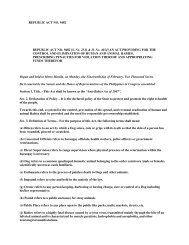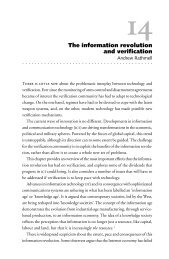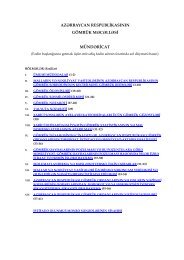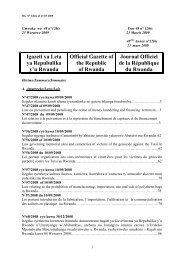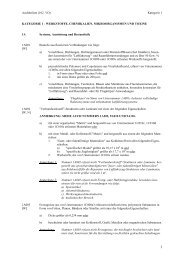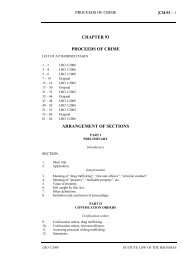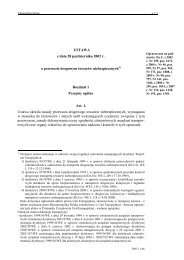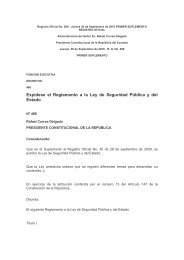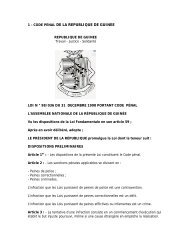East African Community Customs Management Act, 2004 - VERTIC
East African Community Customs Management Act, 2004 - VERTIC
East African Community Customs Management Act, 2004 - VERTIC
Create successful ePaper yourself
Turn your PDF publications into a flip-book with our unique Google optimized e-Paper software.
No. 1 <strong>East</strong> <strong>African</strong> <strong>Community</strong> <strong>Customs</strong> <strong>Management</strong> 2005erence to the circumstances involved. Sales in the Partner State of the narrowest groupor range of imported goods of the same class or kind, which includes the goods beingvalued, for which the necessary information can be provided, should be examined. Forthe purposes of Paragraph 6, "goods of the same class or kind" includes goods importedfrom the same country as the goods being valued as well as goods imported fromother countries.10. For the purposes of paragraph 6(1)(b), the "earliest date" shall be the date bywhich sales of the imported goods or of identical or similar imported goods are madein sufficient quantity to establish the unit price.11. Where the method in paragraph 6(2) is used, deductions made for the valueadded by further processing shall be based on objective and quantifiable data relatingto the cost of such work. Accepted industry practices would form the basis of the calculations.12. It is recognized that the method of valuation provided for in paragraph 6 (2)would normally not be applicable when, as a result of the further processing, theimported goods lose their identity. However, there can be instances where, althoughthe identity of the imported goods is lost, the value added by the processing can bedetermined accurately without unreasonable difficulty. However, there can beinstances where, although the identity of the imported goods is lost, the value addedby the processing can be determined accurately without unreasonable difficulty. Onthe other hand, there can also be instances where the imported goods maintain theiridentity but form such a minor element in the goods sold in the Partner State that theuse of this valuation method would be unjustified. In view of the above, each situationof this type must be considered on a case-by case basis.Note to Paragraph 71. As a general rule, customs value is determined under this Schedule on the basisof information readily available in the Partner State. In order to determine a computedvalue, however, it may be necessary to examine the costs of producing the goodsbeing valued and other information, which has to be obtained from outside The PartnerState. Furthermore, in most cases the producer of the goods will be outside the jurisdictionof the authorities of the Partner State. The use of the computed value methodwill generally be limited to those cases where the buyer and seller are related and theproducer is prepared to supply to the authorities of The Partner State the necessarycosting and to provide facilities for any subsequent verification which may be necessary.2. The "cost or value" referred to in paragraph 7(1)(a) is to be determined on thebasis of information relating to the production of the goods being valued supplied byor on behalf the producer. It is to be based upon the commercial accounts of the producer,provided that such accounts are consistent with the generally accepted accountingprinciples applied in the country where the goods are produced.3. The "cost or value" shall include the cost of elements specified in subparagraphs9(1)(a)(ii) and (iii). It shall also include the value, apportioned as appropriate underthe provisions of the relevant note to paragraph 9, of any element specified in para-175



